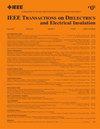电动汽车电芯绝缘技术研究进展
IF 3.1
3区 工程技术
Q2 ENGINEERING, ELECTRICAL & ELECTRONIC
IEEE Transactions on Dielectrics and Electrical Insulation
Pub Date : 2025-06-06
DOI:10.1109/TDEI.2025.3577146
引用次数: 0
摘要
随着向电动汽车的加速转型,对电池安全性和性能的要求越来越高,其中绝缘技术是一个关键因素。本文全面介绍了电动汽车电池的绝缘技术的发展,这是确保电池安全和性能的关键组成部分。它不仅回顾了传统材料,如聚对苯二甲酸乙二醇酯(PET)基蓝色薄膜,还探索了创新的解决方案,如粉末绝缘涂料和紫外线固化绝缘涂料。该综述评估了传统材料面临的挑战,包括抗冲击性、粘合剂粘合以及与高压系统的兼容性问题。进一步讨论了先进材料的配方和应用技术,强调了其独特的性能和潜力,以满足电动汽车行业严格的安全和性能标准。具体来说,本文重点介绍了紫外光固化涂料和粉末涂料的最新进展,这些涂料具有优异的绝缘性能和环境可持续性。报告还提出了电动汽车电池绝缘技术的未来发展方向,强调了材料创新对电动汽车市场持续增长和可持续发展的重要性。本文章由计算机程序翻译,如有差异,请以英文原文为准。
Advancements in Insulation Technologies for Electric Vehicle Battery Cells: A Review
The accelerating transition to electric vehicles (EVs) demands enhanced battery safety and performance, with insulation technologies being a critical factor. This review comprehensively examines the evolution of insulation technologies for EV battery cells, a critical component in ensuring battery safety and performance. It not only reviews traditional materials such as polyethylene terephthalate (PET)-based blue films but also explores innovative solutions like powder insulation coatings and ultraviolet (UV)-curable insulation coatings. The review assesses the challenges faced by conventional materials, including issues with impact resistance, adhesive bonding, and compatibility with high-voltage systems. It further discusses the formulation and application techniques for advanced materials, emphasizing their unique properties and potential to meet the stringent safety and performance standards of the EV industry. Specifically, this review highlights the latest advancements in UV-curable and powder coatings, which offer superior insulation properties and environmental sustainability. It also provides insights into the future direction of insulation technologies for EV batteries, emphasizing the importance of material innovation for the continued growth and sustainability of the EV market.
求助全文
通过发布文献求助,成功后即可免费获取论文全文。
去求助
来源期刊
CiteScore
6.00
自引率
22.60%
发文量
309
审稿时长
5.2 months
期刊介绍:
Topics that are concerned with dielectric phenomena and measurements, with development and characterization of gaseous, vacuum, liquid and solid electrical insulating materials and systems; and with utilization of these materials in circuits and systems under condition of use.

 求助内容:
求助内容: 应助结果提醒方式:
应助结果提醒方式:


